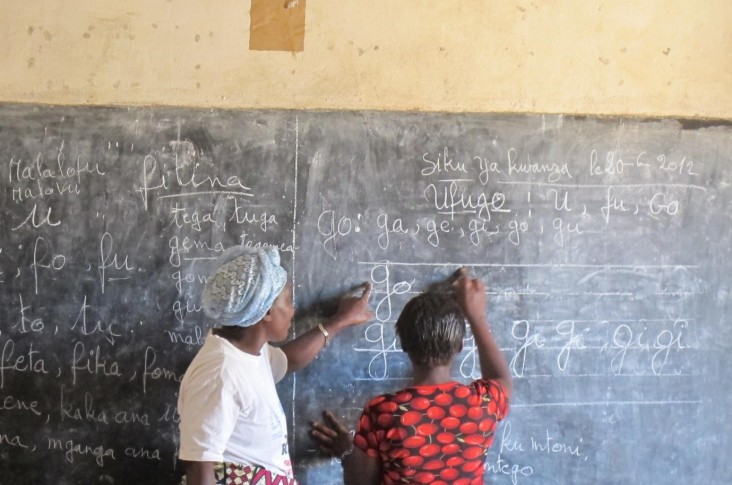
The Democratic Republic of the Congo (DRC) education system is plagued by low coverage and poor quality. 3.5 million children of primary school age are not in school, and of those who do attend, 44 percent start school late, after the age of six. National data indicate that only 67 percent of children who enter first grade will complete sixth grade. Of those who reach 6th grade, only 75 percent will pass the exit exam.
The Ministry of Education (MOE) is one of the most reform-focused ministries in the DRC. The Minister is the longest standing in the Cabinet and has withstood numerous reshuffles since 2006. This long-term continuity has fostered a cohesive partnership between donors and the MOE to implement key strategies, reforms, and sector plans. In addition, the government of the DRC (GDRC) has increased its financial commitment to education from 7.9 percent of its budget in 2012 to 14.7 percent in 2015. Within this context, USAID/DRC has provided assistance to all levels of the education system and, in FY 2015, achieved impressive accomplishments in line with both goals 1 (improved reading skills) and 3 (access to education in crisis environments) of USAID’s Education Strategy as well as the Mission’s Country Development Cooperative Strategy (CDCS).
As the leader of the donor education group, USAID provides continuous technical advice and support to the GDRC in its implementation of a three-year, $100 million grant from the Global Partnership for Education to support the MOE’s strategy. As this project ends in August 2016, USAID has endorsed the GDRC’s follow-on funding request with a requirement for the GDRC to effectively implement its free access to primary education initiated in 2010.
In line with USAID’s objectives under its 2015-2019 CDCS, USAID’s education activities support the MOE to increase access, equity, and retention, as well as improve the quality and relevance of education for Congolese youth.
USAID and the United Kingdom Department for International Development (DfID) have jointly funded a groundbreaking, five-year education program focused on reading outcomes to support the GDRC’s 2016 – 2025 education and training strategy. This is the largest single education intervention in the DRC and will improve the reading outcomes of 1.5 million grade 1-4 students in French and their local language. It will employ professional development approaches for teachers that use local languages to help young children learn to read, consistent with the new curriculum. The program will also reach 450,000 out-of-school children to improve retention in primary grades by 30 percent in target schools, and work at the provincial level to improve education governance and accountability. Not only does this program contribute significantly to the GDRC Mission objectives, it also increases equitable access to education in crisis and conflict environments.
In eastern DRC, USAID’s Accelerated Learning Programs (ALPs) are extremely effective in providing education opportunities to out-of-school youth. ALPs compress the equivalent of the six-year primary program into three years, allowing students to re-enter the formal education system at the secondary level or qualify for vocational training.
As violence at and around schools is a known barrier to access. USAID has created school environments that are safe and conducive to learning for children, particularly girls, by training teachers, administrators, mentors, and parent-teacher associations on gender sensitive pedagogy, children’s socio-emotional well-being, and on how to assess safety and security at the school. School by-laws and a code of conduct were developed and adopted by all of the targeted schools in peri-urban areas.








Comment
Make a general inquiry or suggest an improvement.